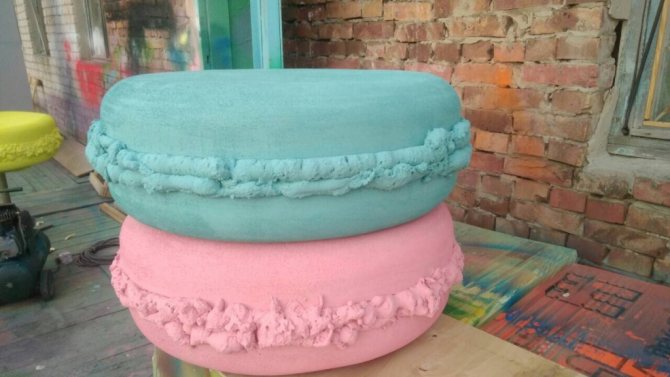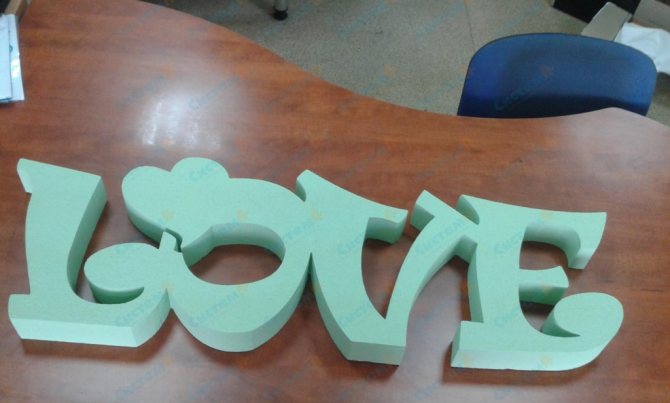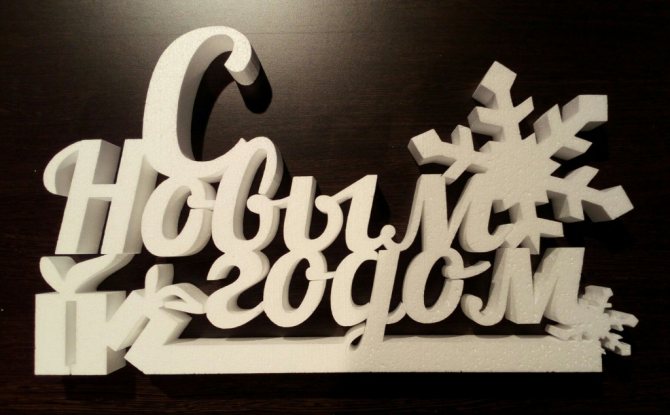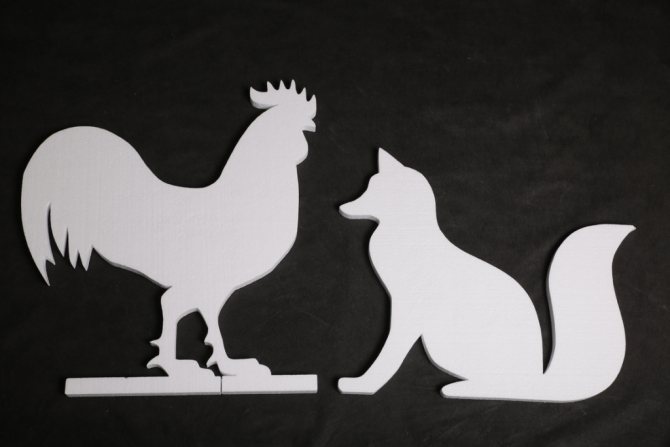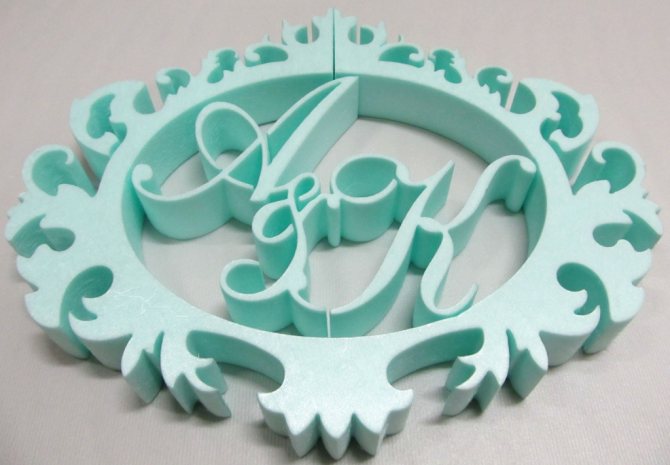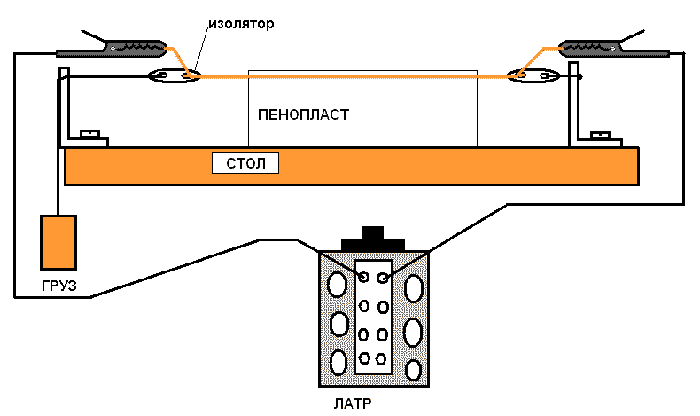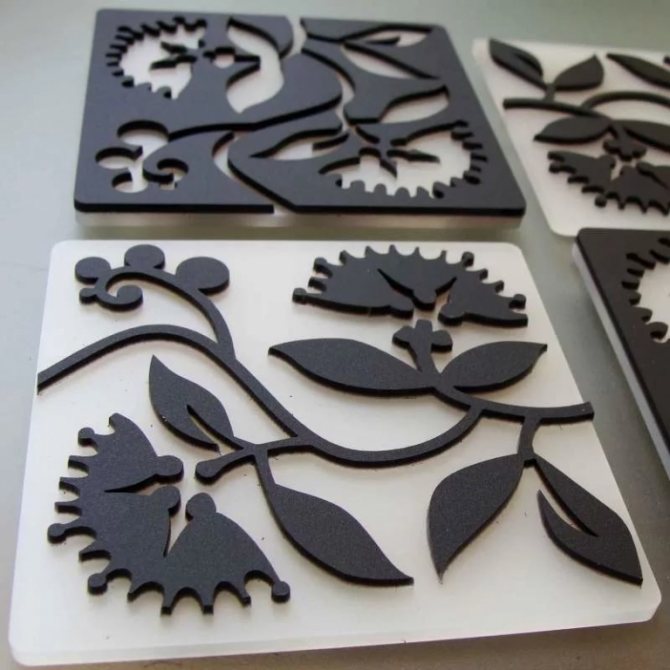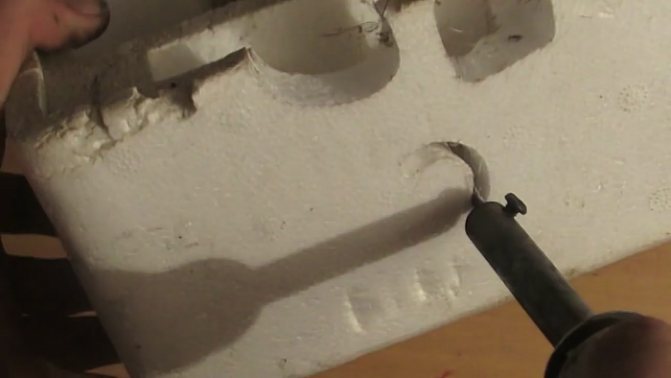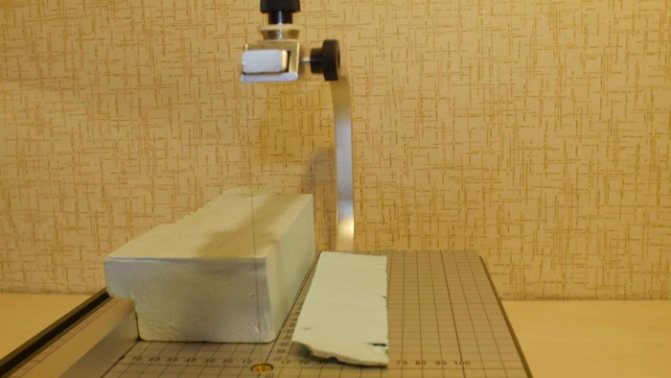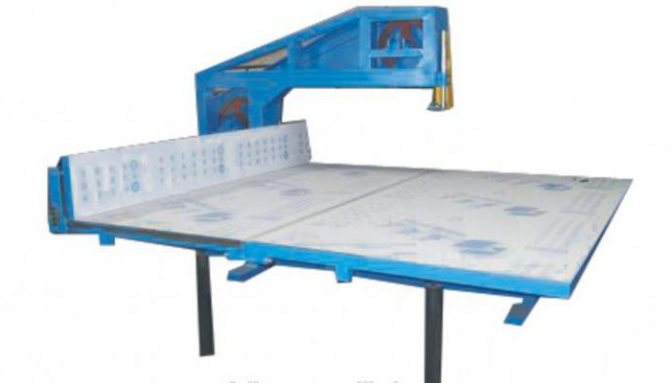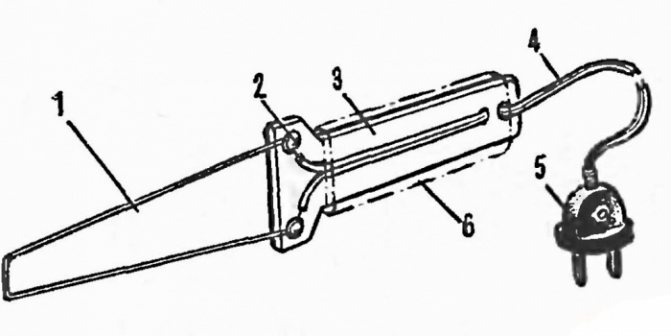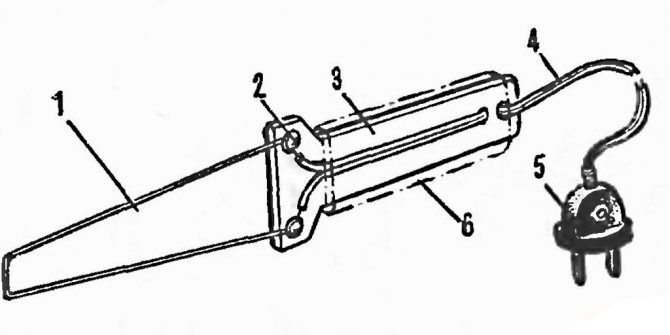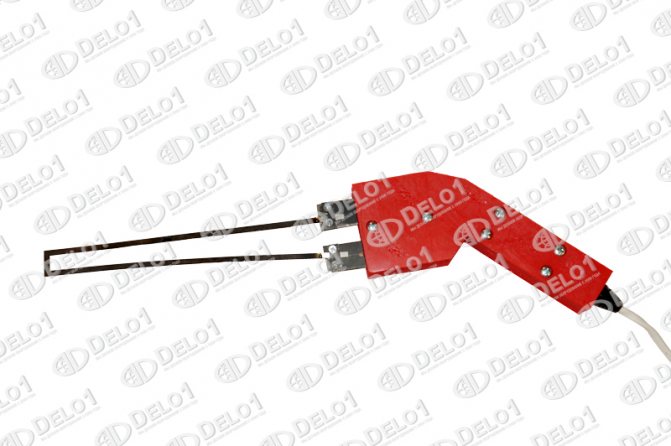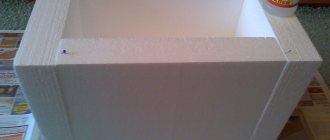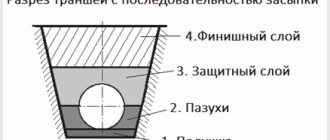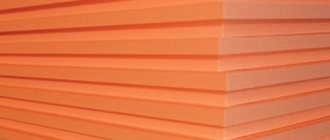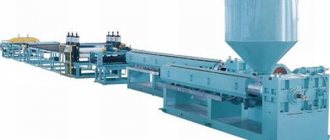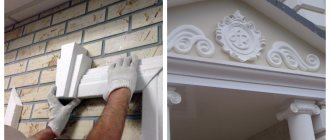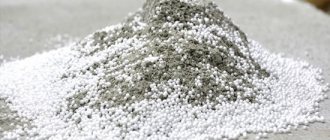Varieties of foam
Currently, manufacturers produce several types of foam. The resistance of a material to any mechanical stress depends on its density. Therefore, for different installation work, a certain material is used. The higher the density, the stronger and heavier the foam:
- Low density... Not suitable for creating shapes with clear lines. During cutting, the foam will begin to break and crumble. It is fireproof and has good moisture resistance. Often used as insulation.
- High density... The material is designed for special conditions, since it retains the thermal insulation of the room well, it is resistant to high loads, as well as the appearance of various microorganisms and mold. At the same time, it has a high price.
Why CNC Styrofoam Cutting is Preferable to Manual Cutting
Despite the fact that expanded polystyrene is a soft and easy-to-handle material, processing it mechanically brings certain inconveniences. These include:
- increased risk of injury due to the specifics of the instruments;
- contamination of the working room or adjacent area;
- release of toxic fumes;
- the need to comply with safety rules;
- characteristic "squeal" of the material when sawing;
- forced stops for sharpening and / or heating the tool;
- difficulty in selecting suitable equipment;
- burns and burns from molten plastic;
- difficulties in performing complex figures;
- lower, in comparison with industrial, cutting accuracy and speed of execution.
Contact Studio Kvadrat in Moscow and be sure of the result! We will provide services for cutting foam quickly and inexpensively, eliminating all the associated inconveniences.
Advantages and disadvantages of the material
The best heat-insulating material - polystyrene - has many positive and negative properties. Its advantages:
- This is a special insulation that is capable of high-quality soundproofing not only of individual rooms, but also of all buildings.
- It does not contain harmful substances, so the material is environmentally friendly.
- Used as ceiling coverings. Decorative items have different texture patterns and colors.
- Applied during transportation. For high-quality sealing, the product is additionally sealed with foam.
- Due to its light weight, it can be transported, unloaded and stacked without any problems.
- The material is resistant to fungi and mold.
Under the influence of high temperatures and some technical substances, the foam begins to collapse. Therefore, when working with material, certain rules must be followed. Do not use gasoline, acetone and white spirit. The foam board will begin to crumble and collapse from the inside at an air temperature above +500 degrees. Because of this, in places where insulation is used, the temperature regime must be observed.
Shape cutter
When working with large foam sheets, it will be difficult to use the stationary cutter. Such panels are difficult to fit on the desktop. In these cases, a handheld foam cutter is used. Such a tool is often made from a jigsaw.The cutting blade in these tools should be replaced with nichrome wire.
Such an electric cutter is quite simple to build with your own hands. To make cutting curly elements more convenient, you can make several devices with different shapes. First, remove the cutting blade from the jigsaw, and bring the wire to the handle. The voltage will be low, but the handle and other metal parts should be insulated. A nichrome wire is connected to the cable. For this, nuts are used. The wire is bent in a certain way.
You can use a soldering iron as a cutter for curly cutting of foam. It needs some modification. The device already has an electrical wire in its construction. To create a foam cutter from a soldering iron, you will need to replace the element that is heating up with nichrome wire.
Such a device is characterized by high ease of use. Thanks to such a product, it turns out not only to cut slabs of material into smaller sheets, but also to make recesses in them.
Cutting devices
Cutting the material into small pieces is very easy. But in fact, doing this work, you need to adhere to some nuances and know certain tricks. Compliance with all the rules will help to quickly and efficiently process the material.
Which tool cuts the foam better than others? There are several tools with which you can shape parts:
- Hacksaw for wood. A long, straight cut is easy to make with a hacksaw on wood. How accurate and uniform the cut is depends on the size of the teeth: the thinner the teeth, the better the cut. It is easy and fast to work with the tool, without injury. Suitable for cutting material over 80 cm thick.
- String. The tool provides fast and accurate cutting of the material. It is often used by home craftsmen.
- Soldering iron. This tool is used when high precision slicing is required. The soldering iron is equipped with a knife attachment that heats up when switched on. The part is fixed and slowly cut with smooth movements. The work is carried out with extreme caution, since the foam melts and drips under the influence of a hot knife.
- Knife with attachment. Small pieces can be cut with a sharp knife. But its end is equipped with a rubber nozzle. The foam parts are securely fixed in a vice and then cut. Sometimes the knife slips off during cutting. To avoid injury, the movement of the knife is done "from oneself".
- Stationery knife. Smooth cutting of the foam can be done by heating a clerical knife. The disadvantage of this tool is that it dulls quickly. It is used to cut thin material.
Machine design
The basis of the device for cutting the foam was a sheet of chipboard (chipboard). The size of the slab should be taken based on the width of the foam plates that are planned to be cut. I used a furniture door measuring 40 × 60 cm.With this size of the base, it will be possible to cut foam plates up to 50 cm wide.The base can be made from a sheet of plywood, a wide board, fix the cutting string directly on the work table or workbench.
Pulling a nichrome string between two nails is the limit of the home craftsman's laziness, so I implemented a simple design that provides reliable fixation and smooth adjustment of the height of the string during cutting above the surface of the machine base.
The ends of the nichrome wire are attached to the springs, dressed on M4 screws. The screws themselves are screwed into metal racks pressed into the base of the machine. With a base thickness of 18 mm, I selected a metal stand 28 mm long, so that when fully screwed in, the screw does not go beyond the bottom side of the base, and when it is maximally unscrewed, it provides a foam cut thickness of 50 mm.If you need to cut thicker foam or foam sheets, then it will be enough to replace the screws with longer ones.
To press the post into the base, first a hole is drilled into it, 0.5 mm less than the outer diameter of the post. In order for the racks to easily be hammered into the base with a hammer, the sharp edges from the ends were removed on an emery column.
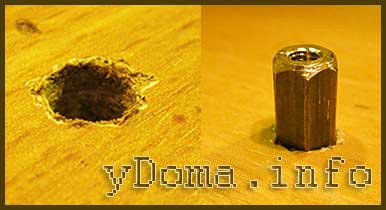
Before tightening the screw into the rack, a groove was made at its head so that the nichrome wire during adjustment could not move arbitrarily, but took the required position.
To make a groove in a screw, you first need to protect its thread from deformation by putting on a plastic tube or wrap it with thick paper. Then clamp the drill in the chuck, turn on the drill and attach a narrow file. The groove will be ready in a minute.
To prevent the nichrome wire from sagging due to elongation during heating, it is fixed to the screws through springs.
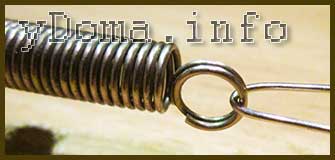

The spring from a computer monitor, used to tension the grounding conductors on the CRT, turned out to be suitable. The spring was longer than required, I had to make two of it, for each side of the wire attachment.
After preparing all the fasteners, you can fix the nichrome wire. Since the current is consumed during operation is significant, about 10 A, then for reliable contact of the current supply wire with the nichrome wire, I used the method of fastening by twisting with crimping. The thickness of the copper wire at a current of 10 A must be taken with a cross section of at least 1.45 mm 2. You can choose the cross-section of the wire for connecting nichrome wire from the table. I had at my disposal a wire with a cross section of about 1 mm 2. Therefore, each of the wires had to be made of two with a cross section of 1 mm 2, connected in parallel.
If the electrical parameters of the nichrome wire are not known, then you must first try to connect a low-power electrical appliance, for example a 200 W light bulb (about 1 A will flow), then a 1 kW (4.5 A) heater, and so increase the power of the connected devices while the nichrome the torch wire will not reach the desired temperature. Electrical appliances can also be connected in parallel.
The disadvantages of the last scheme for connecting a nichrome spiral include the need to determine the phase for correct connection and low efficiency (efficiency), kilowatts of electricity will be wasted uselessly.
Have you tried cutting styrofoam with a regular knife? It does not work, as the material crumbles. I'll walk you through how to make a DIY Styrofoam cutter and provide three simple, step-by-step instructions for assembling a Styrofoam and Plastic cutter.
Homemade foam cutting machine
A tool for cutting foam can be made by hand at home. The model is chosen depending on the design features.
Thermal cutter manufacturing
From a jigsaw and a soldering iron, you can make a foam thermal knife:
- The main detail in this device is the bushing. It is made from a plate that is pre-sharpened, bent, and then a hole is made. The hole is required for the thread.
- The wires coming out of the hole are cut off. In places of rupture, the holes are soldered. It turns out a burner.
- A jigsaw is mounted in the finished plate. It is cut into two pieces and bolted on top of the plate. The lower part of the plate is installed on the base, securing with self-tapping screws.
- The sleeve is placed in the foot.
- A hole with a thread with a diameter of 5 mm is drilled in the base.
- To straighten the nichrome wire, turn on the burner and touch the wire with its wires. The scorcher will begin to hum when the wire is weakly heated. This means that it has a weak resistance, and the wire is replaced with a thinner version.
After manufacturing, a test cutting is carried out.
Nichrome cutter
A distinctive feature of this device is the ability to cut material in two ways: along and across. It is made up of filament or wire. This part of the instrument is basic and cannot be replaced by anything. For the manufacture of wire and thread, an alloy of nickel and chromium is used. To cut a sheet of a certain height, the thread is set in a horizontal position. A nichrome wire device cuts a thick foam sheet into thinner pieces.
To make a homemade tool, you will need screws and springs, a wooden block and a base, a laboratory transformer, a screwdriver, a drill and pliers. For the cutter to be universal, the thickness of the nichrome thread should be about 50 cm.
Step-by-step instruction:
Self-made cutter technology
There are many options for constructing effective foam cutters from improvised means. Two of them are especially popular - a cutter and a machine with nichrome thread. Each tool is quite simple to use and is able to provide an even and high-quality cutting of cellular material.
DIY Styrofoam Cutter
In the process of manufacturing a cutting device, it is necessary to use the following materials and tools:
- screwdriver or hammer drill with a drill;
- soldering device;
- two identical pencils;
- pliers with a rounded section at the ends;
- PVA glue or other heat-resistant adhesive;
- nichrome thread;
- two copper wires;
- a wooden block 10 centimeters long;
- insulating tape;
- double battery box;
- wires - one meter;
- switch.
To power such a portable cutter, two conventional AA batteries are used.
Manufacturing process
Having collected all the necessary parts, you can start assembling the cutter structure:
- At each end of the wooden block, make one hole corresponding to the diameter of the matched pencil. Its depth should reach half of the wooden plank. From the edge of the plank, you need to indent 1.5 centimeters.
- In the lower part of the pencils, form a hole for installing a copper wire, the ends of which should be rolled up in a ring.
- Place the plastic battery box on top of the bar with glue. Fix the pencils with the same composition in the previously made holes.
- To adjust the current to the string, install a switch on a wooden bar
- The two wires should be soldered to the connector located in the battery container. From there, bring the current conductor to the switch, and then strip the ends from the braid and use a soldering iron to fix it to the copper wire on each separate pencil. Insulate the connection points.
- Pull the nichrome string tight, threading it and fixing it well between the copper rings.
Batteries should be inserted into the finished cutter and you can start working. Such a tool is capable of cutting styrofoam up to 4 centimeters thick. At the same time, with its help, you can cut out simple shapes.
Homemade machine
A stationary installation for cutting foam plastic allows you to more accurately cut the cellular product along the outlined lines. In the process of processing, you do not need to make movements with the tool, but simply move the material itself. You can make a machine with your own hands.
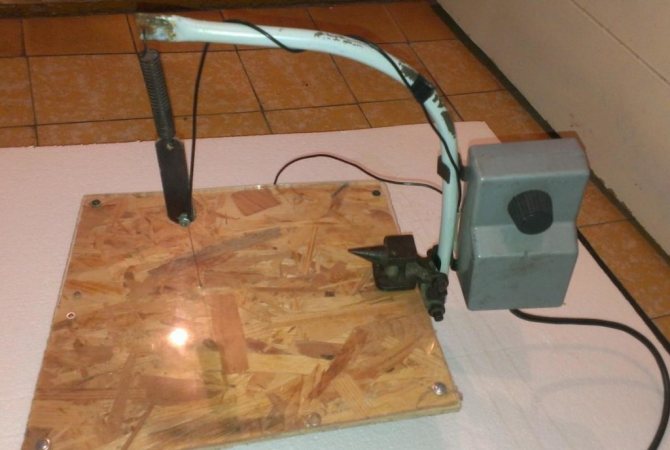

Homemade foam cutting machine
For the manufacture of a stationary cutter, you must prepare the following devices:
- two long self-tapping screws with wide heads.
- nichrome string;
- wires for connecting current;
- rheostat for adjusting the charge strength;
- step-down transformer with a voltage of 12 volts.
A table is used as a basis. The supporting part can be made by yourself. The main condition for its manufacture is the presence of a flat, smooth surface. The dimensions of the table are selected arbitrarily.
Manufacturing technique
It is not particularly difficult to assemble a homemade machine:
- A longitudinal line is indicated in the center of the table. Self-tapping screws are fixed at its ends on both sides of the support plane;
- The nichrome thread is pulled between the installed screws. At one end, it is simply fixed, and at the other, it is guided through a spring. The string should be located at a height of 10-15 centimeters from the level of the table surface.
- The wires coming from the transformer are connected to both ends of the stretched nichrome thread. On one side of the self-tapping screw, on which the wire is fixed, a load is suspended. It provides good tension on the cutting element.
To cut the foam, stretch it through a hot thread. The cellular structure of the material allows for quick and accurate thermal cutting. The edges of the product are sealed from the high temperature, ensuring an even cut.
Step-by-step instructions for self-manufacturing of the machine and cutting foam
Step 1. Worktop preparation. You can take any piece of chipboard of the desired size as the tabletop of the device for cutting foam with your own hands. The surface on which the foam will move must be smooth. Holes are drilled in the countertop for the uprights. It is convenient to use metal pins with a thread with a diameter of 10-12 mm as stands. The height of the racks should correspond to the thickness of the foam sheets plus a headroom. The pin is fixed with nuts.
Homemade Styrofoam Electric Cutters
Conventionally, such devices can be divided into groups:
- cutter for linear cutting of foam;
- cutter for curly cutting of polystyrene;
- cutter with a working metal plate.
But despite this division, all cutters have one thing in common.
For their manufacture, you cannot do without a step-down transformer.
Such a transformer must be rated for a minimum power of 100 W. The secondary winding of it must be designed for a voltage of 15 V and have a winding wire cross-section of at least 1.5 mm.
Required tools and materials
Styrofoam is a lightweight material that can be cut with a variety of tools. In some cases, the accuracy and cleanliness of the cut plays an important role. You can provide these properties using the following tools:
- an ordinary sharp knife;
- small stove or hacksaw;
- strong string;
- a knife with a thermo effect;
- thermal cutter;
- cutter with laser beam.
Each builder has his own preference for choosing one of the tools. All tools allow you to process the foam with high quality and form a straight line. Polyfoam has low resistance to mechanical stress - this should not be forgotten when choosing a tool.
Cutting with a stationery knife
Even at home with a real master, cutting styrofoam will not be able to cause problems. To do this, it is quite enough to have a clerical knife with you. It is important that the blade is sharp enough. This minimizes the likelihood of waste.
In the absence of a sharp knife, a regular saw or hacksaw can easily replace it. Choose a tool with a short tooth. Thanks to this, the final surface will not be rough.
Today, in any hardware store you can find a special blade for cutting foam. When exposed to it, only fine dust will be formed.
Nichrome wire cutting
To use this tool, you will need to additionally assemble the device. It will include not only a nichrome thread, but also a 12 or 24 volt transformer. In advance, you must also take a piece of a small pipe and a table. The string will be tensioned by a spring. Nichrome is a material that is part of any hair dryer. The apparatus must function in such a way that the thread heats up and can melt the foam.Thanks to this, it is possible to obtain various complex shapes from the material.
Linear cutter
To create such devices, you should prepare a workspace. Usually a table is chosen for such purposes. Two vertical risers are attached to it. Each of them must have an insulator. Pull a nichrome thread between the insulators. A free hanging load is suspended from it. The nichrome thread is connected to the contacts connected to the step-down transformer.
The principle of operation is quite simple. The nichrome thread heats up when connected, which makes it easy to cut the foam. The suspended weight keeps the thread taut. The weight is necessary because when heated, the thread begins to sag.
Moving foam is cut with nichrome thread quickly and smoothly. How thick the processed sheets will be depends on the height of the thread above the working surface of the table. The main thing is that the foam is fed at the same speed throughout the entire cutting period.
To cut the sheets vertically, you will need to use a different cutter design. In it, the cutting wire is stretched in a vertical position. In this case, the work surface is made of chipboard. A frame must be attached to it. It is better if this element is made of a metal profile. However, wooden blocks work well as well.
The frame is equipped with a holding paw, on which a nichrome wire is suspended. A load is attached to its end. The wire is passed through a hole made in the working surface. So that it does not touch the tree, the hole is protected from the inside with a metal hollow tube.
When using thermal cutters, the foam is not only easily cut into certain blocks. Various geometric shapes can be cut from large slabs, such as a square, a semicircle, a triangle. Before work, it is enough to draw a marker along the surface of the slab, marking the cut line.
Cutting foam with a string
When using a knife, the material can be severely crushed. In this case, it is replaced by an ordinary string. To obtain the fastest cutting possible, it must be preheated to the desired temperature. At home, the device can be assembled by yourself. To lower the temperature, an additional step-down transformer must be connected to the network. The device has the same principle of operation as with a nichrome thread. It is important to select such a pipe so that its thickness does not exceed 20 mm. Thanks to the device, it is possible to quickly cut the foam up to two centimeters. The quality of the string is also important - it should be thin and sharp.
How to do it yourself
The need for a cutter can arise at any time if you do some chores around the house quite often. Perhaps someone was faced with the fact that it is necessary to make a part, resorting to a special mold for casting with epoxy resin.
And to do that, you need a piece of Styrofoam. For example, you can use styrofoam from the packaging of your TV. It is necessary to draw on it with a ruler, a compass and a ballpoint pen the places where it will be necessary to make holes in the future.
This is where the need for an electric cutter comes in. After all, it will be difficult to perform this action without spoiling the foam sheet without such a tool. Let's consider one of the options for how to make a device of this type at home.
A homemade cutting device can be of various designs. It is from her and the type of cutting that will depend on how exactly the cutter copes with the set goals.
DIY styrofoam cutting device
Polyfoam can be cut not only with nichrome thread, but also with metal plates. An ordinary soldering iron with a power of 60 watts should be taken as a basis. It will need to be reconstructed - instead of the sting, place a knife plate.Hot-melt synthetic is also used as the main material.
The wooden leg must be additionally equipped with supporting legs. Previously, a gap should be made in the board and a knife should be placed in it. Additionally, the device should be equipped with a stand with brackets. An important role is played by a protective screen, which will further protect a person from burns.
Specialized machines and their cost
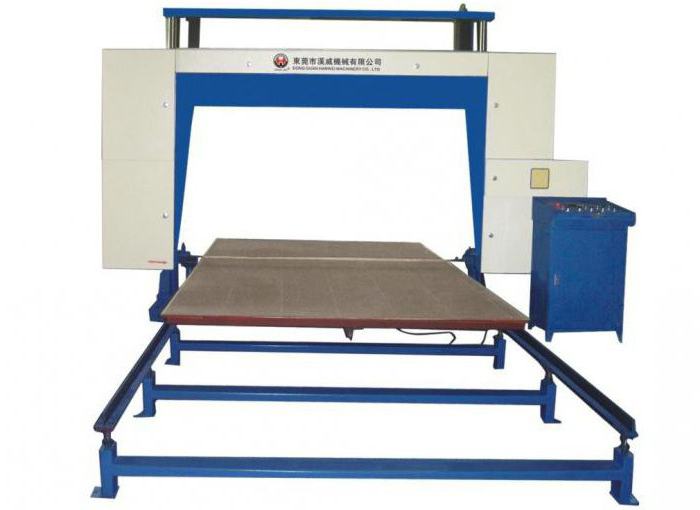

Quite often, foam is used not for the purpose of sound or thermal insulation, but for the manufacture of design elements for the interior or advertising. This is possible thanks to the use of special machines that are designed for true shape cutting. With the help of such equipment, canvases can be processed in several projections. If desired, rather complex elements can be made, such as miniature models of cars, chess, gears, as well as various figures and decorative ornaments.
Among others, the machine for cutting foam plastic "FRP 01" should be highlighted, which is very popular due to its simplicity of design and versatility. With this equipment, you can make linear elements, insulation boards, letters for signs and figures. The control over the device is carried out using a computer program that is supplied in the kit. The device can be purchased for 115,000 rubles.
Another model of the machine is SRP-K "KONTUR". It is designed for the manufacture of parts for facade finishing and formwork. The control is manual, but the power consumption is relatively low and amounts to 150 V. Easy transportation is a distinctive feature of the device.
For true shape nesting, you can use ČSFR-2D-02.12.06, which is a 3D foam cutting machine. It is used to create advertising inscriptions, the height of which can be up to 2 m. The device can be used to create symbols and logos. The maximum size of the processed sheet is 200x1200x600 mm.
How to cut styrofoam. Step-by-step instruction
- The first step is to find a sufficiently thin and sharp object that will be used to form the incision.
- If there is no special tool, then it is quite possible to use a credit card, a table knife, or any object with thin edges.
- Along the notch line, the foam can be easily broken. This is most conveniently done at the edge of the table. You can only press lightly.
- If there are convex pieces left, then they can be cleaned with a knife.


Professional advice
To cut foam quickly and efficiently, we recommend following the following professional tips:
- It is not very convenient to cut with an ordinary knife. It is best to use a soldering iron instead. It will be possible to cut the foam quickly and efficiently if the round side can be easily flattened with a hammer. Additionally, you will need to put on a metal cap on the electrical appliance. The blade must be secured well. Only then should the soldering iron be plugged into the network. Operate the instrument only in a well-ventilated area. It is best to open the windows additionally. When heated, a gas is released from a soldering iron, which has a toxic effect on the respiratory system.
- It is most convenient to cut the foam with a nichrome thread. Thanks to her, the process will take place quickly, and the edges will be even.
- Nichrome material is found in hair styling devices, hair dryers, irons, and boilers. If there is no way to get such a thread, then you can use steel wire. It should be stretched across the table. One side is fixed rigidly, and the other only with a spring. A transformer is connected to both of them. It must first be connected to the electrical network.
- The foam sheet must be placed over the wire. The current charge directly depends on the thickness of the working material.It is necessary to ensure that the wire turns red. You should not allow incandescence, because in this case, the cut may turn out to be too wide.
- All manipulations are most conveniently done if the table is at an angle of 20-60 degrees to the floor. Thanks to this, the very feeding of the foam will take place under its own weight. However, for this there must be a sufficient level of slip.
- The nichrome wire will become larger during operation. That is why it is important to secure it to one side with a spring. Thanks to her, length regulation will occur.
- To cut the foam, it is allowed to use a grinder or a jigsaw. It is also recommended to use a file with a wavy blade.
- If you need to create figures from foam, then molds for dough are quite suitable for cutting them out. However, in this case, you can take only that foam, the thickness of which does not exceed 1.27 cm.
- To quickly smooth out the protrusions, you just need to rub the foam together.
- In the process of working with foam, it is recommended that all manipulations be performed on a cutting board. In this case, the likelihood of damage to the table is minimized.
Today, styrofoam figures are very popular in interior design. To create them, it is advisable to use a special knife or an automatic device. To obtain even edges, it is advisable to perform all manipulations with a preheated object. You can make a knife yourself from an old soldering iron. This tool is very popular with interior designers.
We use automated complexes
The refinements of architectural design also require insulation. In order to preserve their expressiveness, it becomes necessary to manufacture complex elements. How do you cut such parts? A more affordable option is processing the insulation by milling. But milling of foam is not carried out for the reason that the cutter, during its rotation, pulls out rather large pieces of material.
Dense polystyrene foam has a higher mechanical strength and is well milled. Anything is made from it: a letter, a number, a graphic element of any complexity. Even a hedgehog. It is recommended to cut penoplex at high angular speeds with an average linear feed. Ceresite is used to install the fabricated fragments on the facade.
Foam laser cutting is the most advanced technology, combining hot cutting tools with the precision of an automated system. Laser cutting of polystyrene allows you to produce parts of any complexity with the highest accuracy with a minimum level of waste. Foam laser cutting provides a completely smooth cutting surface using a hot beam of directional light moving at high speed. For him there are no restrictions on the thickness of the material and the complexity of the element.
The choice of cutting equipment used for foam boards and for extruded polystyrene foam should be deliberate. Meet technological requirements for finished products and be economically justified.
Those who are planning to insulate an apartment or a newly-built house with their own hands should definitely familiarize themselves with the ways in which styrofoam is cut at home, because this is one of the most popular and affordable methods of insulation.
Styrofoam is a foam material and is mostly air, so it is very lightweight and easy to work with. However, you should not think that no problems arise, because in addition to everything, foam is a rather fragile material. Therefore, if you use an electric grinder, then you should not hope for even edges, besides, the whole room and the site will be strewn with crumbled foam.
No matter how sharp the knife is, the material will still crumble.Of course, this is a minor defect and the sheets will be usable, but cleaning will turn into a troublesome event.
... There is a way out of this situation, you can use a thermal knife. In this case, the edges of the material are melted and it does not crumble. But bad luck, such a device costs a lot, but in principle you can also heat an ordinary knife. However, in this case, you need to be very careful not to get burned, and the work will be significantly delayed.
For this purpose, you can use a different cutting tool, for example, a grinder, only then you should use the thinnest disc. Very often builders also use a simple sharp knife. Sometimes it is advised to take a hacksaw with very fine teeth, but the latter method is very dubious. In addition, the stores sell special thermal knives designed for working with foam.
The thermal knife heats up to 600 ° C in just 10 seconds. However, this tool is quite expensive, so it doesn't always make sense to buy it.
The way out of the situation in many cases will be a device for cutting foam sheets, made by yourself. It is probably somewhat cumbersome, but with the necessary components, it is absolutely free and always available. And if you have to do large-scale work, for example, you have ahead of you, which you have erected for your large family, then the question of how it is convenient to cut the foam plastic, and even a lot and quickly, will not come up throughout the event, no matter how long it lasts.
In order to assemble a foam cutter, you will need a tabletop, each with a pair of springs, M4 screws and 28 mm long struts, as well as a nichrome thread, which will act as a cutting tool. First, we make two holes at the base, press the racks into them, and at the base of the screw head we cut a small groove, thanks to which the thread will be securely fixed in a given position.
When everything is assembled, we attach the string to the screws, but since it can sag during heating, it should be connected through springs, then the thread will always be in a taut position. The power source is connected to such a device by means of ordinary twists. So you can make a homemade and very effective foam cutter, while spending a minimum of effort, time and money.


